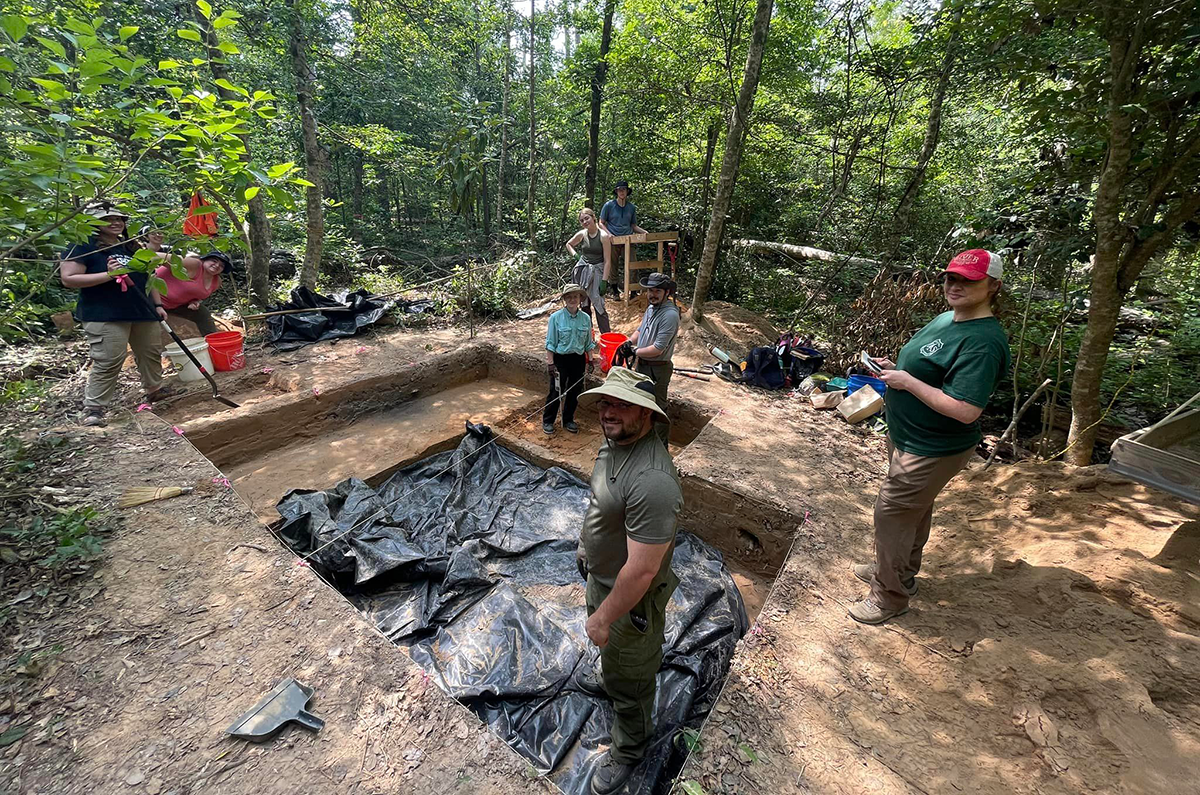A team led by University of Louisiana at Lafayette researchers has excavated thousands of Native American artifacts from one of the oldest and largest prehistoric sites in the western portion of the state.
Their exacting work, however, is far from over. The trove will be sorted, identified, catalogued and examined, enabling researchers to make determinations about past cultures at the Kisatchie National Forest site, a floodplain terrace overlooking a small creek in Vernon Parish.
The team excavated a portion of the site which, as a whole, encompasses a 100-acre swath of land about three-quarters of a mile long. Nomadic groups of people occupied the terrace as far back as the end of the last Ice Age.
“Hunters / gatherers visited and revisited it over hundreds of generations – at home sites and households that were overlapping continuously at least as long as 13,000 years ago,” explained UL Lafayette’s Dr. Mark Rees, a professor who leads the University’s anthropology program and its Louisiana Public Archaeology Lab.
Rees is principal investigator for a more than $700,000 U.S. Forest Service grant that’s funding a three-year project being carried out as part of the Kisatchie Heritage Program. The effort includes the recently completed excavation. LSU, Tulane University and Northwestern State University researchers also participated.
Their recent field work has already yielded a significant find. Researchers uncovered the first evidence of a permanent structure in the national forest. Over the years, about 4,000 sites have been explored among the forest’s over 604,000 acres.
The discovery came several feet below the surface in the form of post molds – circles of discolored soil found on the floor of an excavation pit. The stains, which are known as features, were created by chemical changes in rotting wood.
UL Lafayette’s Dr. Erlend Johnson, an adjunct instructor, is project director for the Louisiana Public Archaeology Lab. The discovery is noteworthy, he said, given the circles represent posts that supported a fairly large structure. “It was built for a reason and now we have to work on the interpretation of what the building was and why was it there,” he said.
Laboratory research and analysis on all artifacts and finds will be extensive.
Soil samples collected from near the post molds, for example, will undergo luminescence dating, a process to determine when the soil at that level was last exposed to sunlight. Other soil samples will be analyzed for evidence of plants or seeds that could yield clues about dietary habits.
Artifacts such as ceramics, stone tools and projectile points – including arrowheads and dart and spear points that predate the bow and arrow – will also help researchers establish timelines and provide insights about behavior of past cultures. The trove will also enable researchers to study function – what particular artifacts were used for and why they were important to the people who used them.
Gloria Church, a senior anthropology major from Natchitoches, La., participated in the excavation. She is looking forward to rolling up her sleeves for lab investigation of a collection of artifacts gathered from a site that is relatively “intact.”
That means, she explained, one at which artifacts haven’t shifted around much or otherwise been compromised on a large scale by factors such as erosion or flooding, uprooted trees or heavy looting.
“The integrity of the site is rare. I’ve been on other digs that were interesting, but the sites weren’t as intact. Ones where we found a bunch of cool stuff, but the dirt had been jostled and the artifacts were all out of context. But this specific site is intact for the most part and is a valuable area,” Church explained.
Photo caption: A team led by UL Lafayette researchers has excavated thousands of Native American artifacts from a site in the Kisatchie National Forest that dates back to the end of the last Ice Age. The trove will be examined, enabling researchers to make determinations about past cultures. Submitted photo
